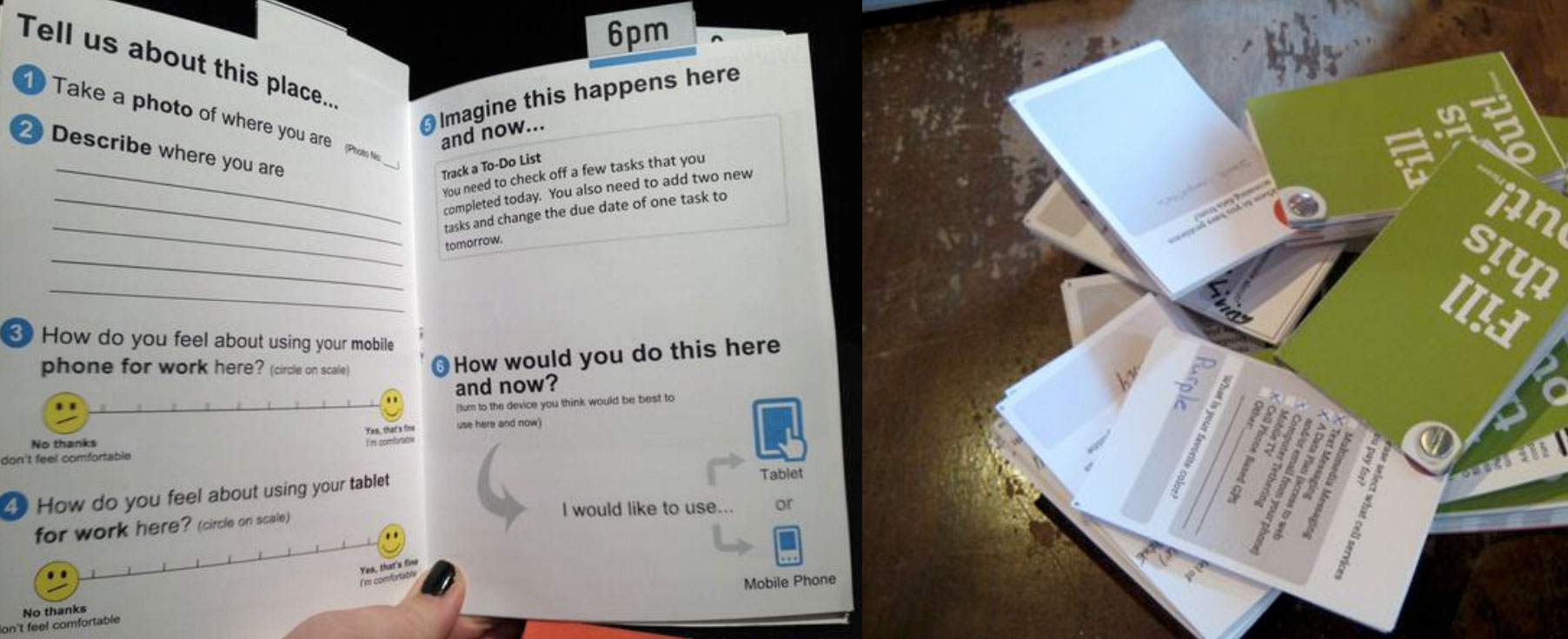Method Overview
Diary Study
Intensive longitudinal research for fine-grained empirical evidence. Diary studies are an economical way to collect in-depth, contextual, longitudinal data
Exploratory method
Suggested Time
Preparation & Analysis: 7 days
Recruiting & Screening: 3-5 days
Study time: few days to several months, (depending on the study topic)
Level of UX Expertise
Low/Medium
Materials
Briefing materials, product to be tested (if applicable), diary template (if structured), logging software or tool, participation incentives
Participants
Typically 10 to 15 participants (The number depends on your research question), research & design team
 Nice to have
Nice to have
This method might be important for some innovations only
What
In a Diary Study, data is self-reported by participants over a longer period of time. During the study, participants are asked to keep a diary about specific activities, thoughts, and/or experiences.
Who
In a Diary Study, typically you involve subject matter experts, and a design team that takes up the results and integrates them in your further innovation development process.
When
Diary Studies can surface unknown topics and phenomena and thus are a great exploratory research tool. In the evaluative phase, they can be used to understand user interactions with a prototype or fully developed service over time.
How much time
Preparation, recruiting and briefing for diary studies is time-intense (10 days at least). During the logging time you need to stay in contact with the participants (to keep up engagement and make sure the task is done correctly). Finally, you’ll need a few days for the analysis of your data, depending on the amount of data and your data analysis skills.
Why
Diary Studies are used to understand
- Behavior that happens sporadically or unplanned and is thus hard to observe, or
- Behavior that is part of a series of actions that take place over a long time, or
- When the research aims to understand change over time, or
- When there is reason to fear influencing of behaviors when observers come in, or with sensitive population that cannot be directly observed.
Why it’s useful
![]() Minimally intrusive, capture in-context, longitudinal data
Minimally intrusive, capture in-context, longitudinal data![]() Efficient: can be done with 20 or more participants simultaneously
Efficient: can be done with 20 or more participants simultaneously![]() No self-reporting bias
No self-reporting bias![]() Can replace expensive field studies
Can replace expensive field studies
Potential challenges
![]() Requires time and dedication from participants
Requires time and dedication from participants![]() Preparing materials and diary template can be time-intensive
Preparing materials and diary template can be time-intensive![]() Generates a lot of qualitative data, easy to get lost on potential clues. Needs a clear research question!
Generates a lot of qualitative data, easy to get lost on potential clues. Needs a clear research question!
Is this for you?
Get step-by-step guidance, expert tips and best practice examples for planning and conducting insightful Diary Studies.

image source: ixd@Pratt
Didn’t find what you were looking for?
These are other evaluative methods that might be useful for your research.




